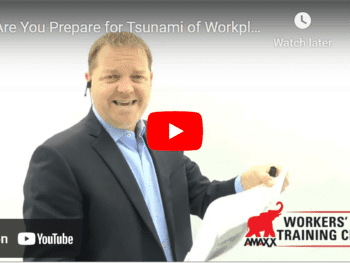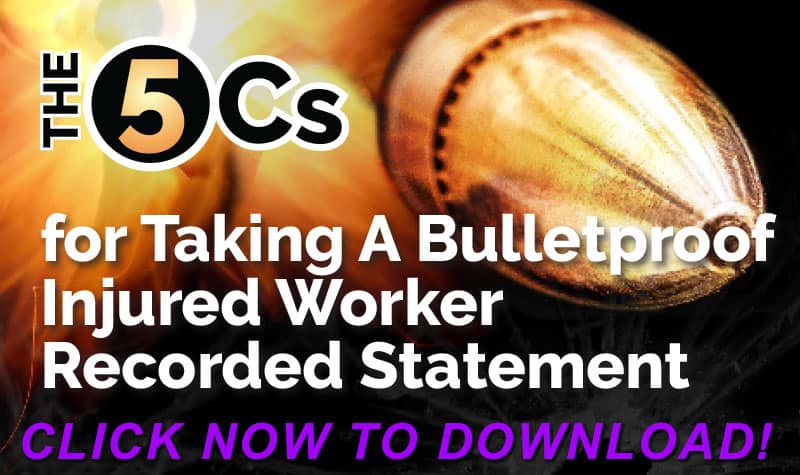Each new year brings talk and speculation about what will be the “next big thing” during that year — a new medical procedure; a new change in laws; or increases in disability and reserving. Some common themes popping up on blogs and in discussion threads are about medical procedures and distracted driving hazard effecting risk management.
-
Aggressive Total/Partial Joint Replacement Surgeries
Hip and knee joint replacements are among the most commonly performed surgical procedures in the United States, according the Center for Disease Control and Prevention. Between 1996 and 2006, total hip replacements increased by one third and total knee replacements by 70%.
Part of this new trend means doctors are finally realizing that months and months of physical therapy and other treatments are not resulting in outcomes patients’ desire. Injured people want to regain as nearly as possible most of their mobility and activity levels they enjoyed prior to an injury. This is particularly true of injuries taking years to develop before the joint finally gives out.
In addition, technology has changed, implants are better, more functional, and last longer and, depending on the comorbidities of the patient, recovery times have lessened. Therefore, physicians are going directly to joint replacement surgery, rather than waste a year on therapy.
Employers need to be aware of the actual causal relationship of joint failure to the issue of a workers compensation injury, keeping in mind most joint replacements are due to degenerative changes, not necessarily an occupational injury. The decision of whether or not an employer is liable for a workers comp claim can vary by state statute, meaning be very aware of all state statutes in every state where your company operates.
Rarely will a carrier opt to pick up a case with a joint replacement recommendation, since the costs are high, and the outcomes for total success can be limited. Be prepared to argue any case where a physician leans toward joint replacement following a workplace injury. Look for possible pre-existing conditions and be sure to have an independent medical examination (IME) done by a qualified and reputable physician.
-
Increasingly Sophisticated Bionic Implants/Prosthetics
Great outcomes are rare for severe occupational injuries that include the loss of a limb since these cases are catastrophic in nature and carry a massive dollar reserve. The days of peg legs and hooks for hands are gone. Current prosthetics are capable of grasping objects with a mind/body connection doing the work, rather than plain mechanics.
Prosthetic limb advancements have grown exponentially over the years, but are very expensive. Prosthetic hands and arms are now like mini computers, with sophisticated wiring and performance. This leads to increased hazards and damage, wear and tear, and replacement/maintenance costs.
Some state statues only require replacement of a lost limb with a “suitable” prosthetic. But suitable to whom? Is it suitable to the claims adjuster, or suitable to the person affected by this life-changing injury? Unfortunately in many insurance claims, the best is not always something the carrier is prepared to pay for. The carrier’s opinion is to replace with a suitable device, a Ford Focus, not a Cadillac Escalade or Ferrari. So a lost limb can be replaced by the Ford Focus of limbs, not the Cadillac of prosthetic devices, or the latest/greatest thing out there.
Prosthetic eyes have also come a long way from the days when eye implants were riddled with infection potential and replacement eyes had little reality to what a natural eye looked like. Today’s eye prosthetics are incredibly life-like, although they do not replace vision. However, a good-looking prosthetic eye is a confidence builder and beneficial to a good appearance.
Be prepared to litigate over the issue of “type of replacement” and do not be surprised when it arrives after coverage for the Cadillac version of a prosthetic is disputed. Avoid legal problems by doing due diligence and get multiple opinions and recommendations for treatment as well as estimates on maintenance costs/repairs.
-
Changing Demographics of the Workforce
Today businesses are doing more with less, leading to employees who are prone to more severe injuries with longer recovery times. Both the increase in obesity and aging adds to this statistic. It is not uncommon for workers compensation claims to increase when layoffs are rumored or forthcoming. Fear of losing a job may cause an employee to file a workers compensation claim over a minor injury and this spells disaster for the employer.
Employers must be aware of the risk. Every employer wants to run an efficient business, but employees can be over loaded by being asked to do more with less. What is the general consensus on the work floor? Are workers hearing about pending layoffs and not telling their managers about a potential injury for fear of repercussion or termination? Are workers asked to do more than one job when coworkers are laid off and not replaced? Failure to address these important questions can be dangerous and costly in the end and counter-productive to efficient management.
-
Better Recovery that Limits Risk of Permanent Partial Impairment
Injuries reported and treated before they morph into major injuries result in reduced recovery time. Reduced recovery time lessens the risk of a permanent injury. In states where an impairment rating is used to pay the claimant additional monies, just opening the lines of communication can save a business/carrier a large sum of money over time.
Let us look at carpal tunnel as an example of early treatment as opposed to late treatment.
When a worker is treated at the onset of symptoms, treatment consists of splinting and medication. The problem can resolve on its own with little loss of work time and minimal medical cost. On the other hand, the longer a worker waits to get treatment, the worse the nerves become damaged, sometimes to the point where surgery will be of little benefit to resolve pain and restore function.
Some states have an almost automatic impairment rating once surgery is performed and costs can be very large not only in additional wage loss, but also in increased medical coverage. Some states cover reasonable, related, and necessary medical costs over a 10-year period, meaning it is hard to wipe an existing claim of this nature off the financial books. Promote early involvement/medical intervention when an injury happens in the workplace.
Author Rebecca Shafer, JD, President of Amaxx Risk Solutions, Inc. is a national expert in the field of workers compensation. She is a writer, speaker, and publisher. Her expertise is working with employers to reduce workers compensation costs, and her clients include airlines, healthcare, printing/publishing, pharmaceuticals, retail, hospitality, and manufacturing. She is the author of the #1 selling book on cost containment, Workers Compensation Management Program: Reduce Costs 20% to 50%. Contact:RShafer@ReduceYourWorkersComp.com.
Author Michael B. Stack, CPA, Director of Operations, Amaxx Risk Solutions, Inc. is an expert in employer communication systems and part of the Amaxx team helping companies reduce their workers compensation costs by 20% to 50%. He is a writer, speaker, and website publisher. www.reduceyourworkerscomp.com. Contact: mstack@reduceyourworkerscomp.com.
©2013 Amaxx Risk Solutions, Inc. All rights reserved under International Copyright Law.










